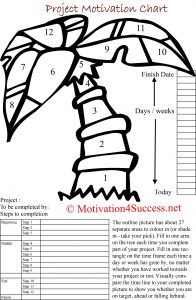
How To Stop Procrastinating
 What is Procrastination?
What is Procrastination?
Procrastination means putting off doing something. Sometimes that is what we do, even when we KNOW we HAVE to get something done, whether it’s pay a bill, take exercise, prepare a long report, decorate a room, apply for a grant or return something bought online that doesn’t fit! We all do it. We may procrastinate in different areas but we all procrastinate.
Structured procrastination
Some people have used procrastination as a way of getting things done – surprising? This is called structured procrastination and was devised by a Stanford professor who wrote a book called Art of Procrastination: The Art of Effective Dawdling, Dallying, Lollygagging, and Postponing. He used procrastination on BIG (really impossible tasks) to get him to complete smaller tasks. We all do that too – he just used it in a really big way. Don’t believe me? Tell me, if you have an article to write, or a long report or a textbook to read, does doing the dishes or tidying your room suddenly become imperative? We often try to put off starting a big task that we dread by working on smaller, easier tasks that we don’t like doing but that we find preferable (or a way of postponing) to making a start on the big important task.
Student Syndrome
This is where someone is given a task with a long completion time, so a student might be told to write an essay that doesn’t need to be submitted for 3 weeks (or the end of term). Student syndrome is thinking that completion date is so far away that there is not need to start just yet, so it keeps getting put off. A week before the due date, or even the day before, the students suddenly realise this is now due and start to panic. Putting off starting is a well known way of putting time pressure on yourself, so the project gets completed in a rush. There comes a time when the anxiety about not submitting a completed project overcomes the fear of having to get started on something you may not know how to do. You can find out more about student syndrome in this post, together with some resources on how to overcome procrastination.
Strategies To Overcome Procrastination
1. Reminders
Our subconscious may try to get us out of starting a new habit or starting on a big project by “making” us forget. Habits are automatic but starting to put a new habit into place needs conscious thought each time, as does doing something that moves us forward on a project.
If you have a calendar with large spaces on it where you can write something and which you check daily, then write a daily reminder to yourself for the next 21 days.
Put sticky notes on your bathroom mirror or the inside of your front door, anywhere you will see them several times a day.
2. Visualization and Affirmations
Take 10 or 15 minutes at a quiet time of day to visualise how you will feel and act when your project is completed or how you will feel when you hand it in on time, knowing you have done good work or how you will feel when you have made your chosen new habit automatic. We often avoid tasks that we feel won’t be enjoyable, so think about why you will enjoy the outcome or the benefit you will get from your new habit. Use affirmations. Say them out loud. “I enjoy swimmimg / jogging / dancing / tennis.” “I feel happy and relaxed handing in my completed essay / report / work”. Affirmations should be positive (I enjoy, I love, etc and should be in the present tense, I am, I do, etc)
3. Just A Small Step
I call this “Just One”. You tell yourself you just have to do one (pushup, dish) or stick it for one minute (putting away laundry, filling the dishwasher) then you can stop. Allow yourself to stop after the one if you want, you can do another very soon but often, you will see that it is only a small job and you finish it in a very short time.
4. Reward yourself
I have motivation charts that I use to get me to do certain jobs. I award myself points for doing them (eg a point each time I climb the 3 flights of stairs or for making the bed) and a small monetary reward for so many points. I choose to give myself a dollar for 100 general points or for 50 exercise points. If funds are tight, be creative about your rewards: how about a 15 minute bubble bath or a visit to a favorite website?
5. Encourage yourself
Forming new habits and overcoming procrastination would be easy if we could just decide to change but it doesn’t usually work that way. Rather than making a “never again” vow, tell yourself it’s “just for today”. You can do the same again tomorrow. Step by step day by day is much easier to achieve.
6. Use A Project Motivation Chart
I have found that a Project Motivation Chart uses several of the above techniques and that of a Daruma doll in one easy colorful page. At least, it’s colorful AFTER you have colored it in! You put the chart somewhere prominent, so it provides a reminder (strategy 1). It has space for completing a small step (strategy 3), provides a means of rewarding yourself (strategy 4) and encourages you to complete a project (strategy 5). You complete it yourself so it will contain empty areas until you complete them (like a Daruma doll).
A Project Motivation Chart provides two scales. One is a timescale in days or weeks, or even months if you choose. This one gets filled in every day or week or month that passes, whether you have done anything or not. This provides the time pressure for those who need it and a visual reminder that the completion date is approaching for those suffering from student syndrome. The other scale is a picture or graphic with areas to be completed as you complete a step in your project. So if one of your steps is to read a chapter in a certain book, then you color or shade in one space on the graphic. It is obviously best if your graphic gets completed in step with, or even slightly ahead of your timescale (to allow for difficulties) but even if it falls behind, having it in a prominent place will remind you each day.
What Strategies do YOU use to overcome procrastination?
You can comment below.